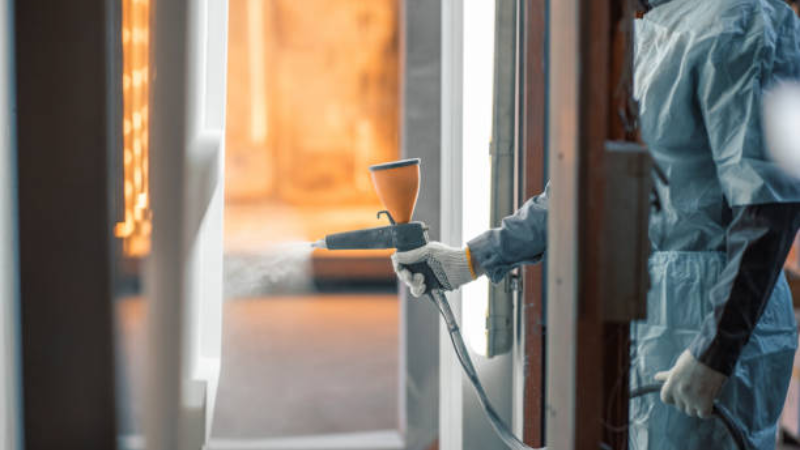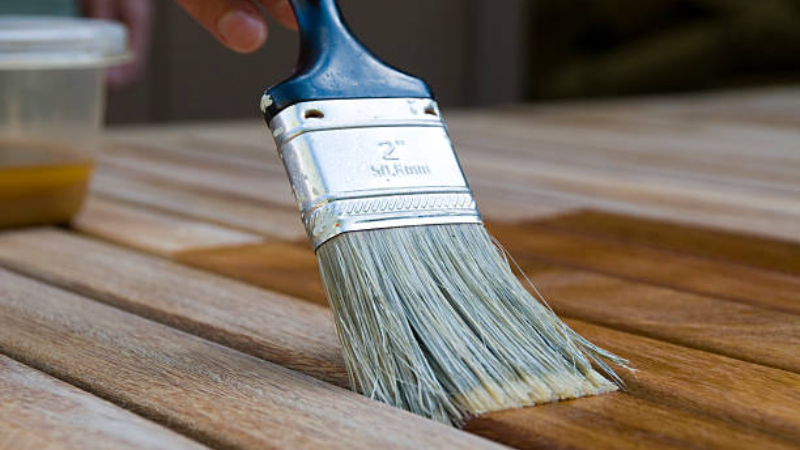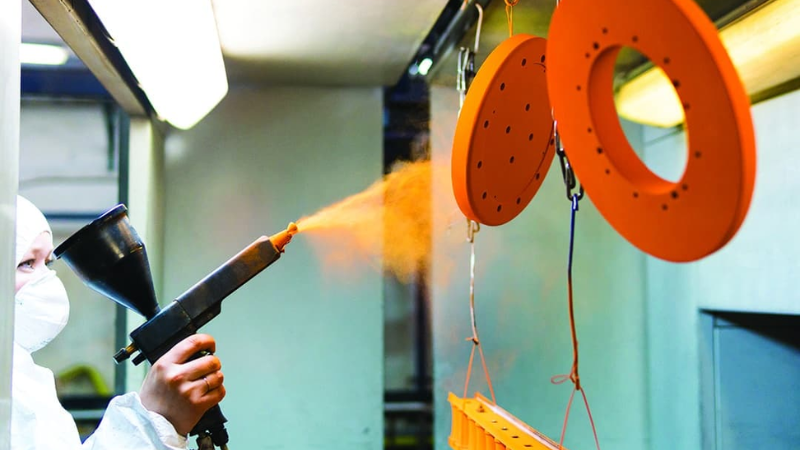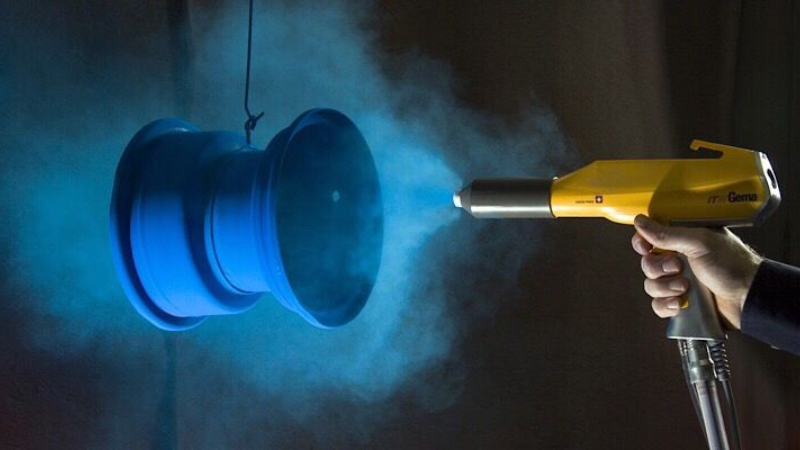Traditional finishes are popular and the go-to for several industrial applications. However, this type of finish has its limitations. Silicone rubber finishes providing properties that outperform traditional finishes, making them a suitable alternative for industrial applications. Nevertheless, this type of protective coating also has its limitations.
This article explores the benefits and limitations of traditional and silicone rubber finishes and their suitable applications.
What Are Traditional Finishes?

Traditional finishes protect surfaces against environmental factors, including moisture and wear and tear. Although traditional finishes can improve the aesthetics of the coated surface, some of the finishes contain volatile organic compounds (VOCs). Unfortunately, VOCs are harmful to the environment and human health.
Traditional finishes are not just a specific coating. Instead, they refer to various coatings, including paint, powder coat, and varnish. In addition, they are often made from several materials, including lacquers, oils, waxes, and water-based paints.
Traditional finishes are applicable in several industrial applications, including medical and healthcare applications. For example, they are used in the medical industry to protect equipment from corrosion and other environmental factors.
The finishes are also used in the automotive industry to manufacture automobile paints for protecting and decorating vehicles. Other traditional finishes industries include the electronic, aerospace, and construction industries.
The Benefits and Limitations of Traditional Finishes

The benefits of traditional finishes include aesthetics, protection, ease of use, and availability. Traditional finishes enhance the beauty of a coated surface. Usually, this finish is used on surfaces like metal or wood, providing an improved color and shine.
Furthermore, the finish protects the coated surface from environmental factors, including moisture, UV resistance, and heat. The protective coating is also widely available, making it suitable for use across several industries. Furthermore, traditional finishes are easy to apply, making them useful for several users.
Traditional finishes also have their limitations. The limitations of traditional vanishes include VOC emissions, limited durability, curing process, corrosion resistance, and application.
Traditional finishes emit VOCs that are harmful to the environment and human health. In addition, the finish has limited durability. Usually, a surface coated with a traditional finish will need frequent maintenance and reapplication.
Furthermore, the curing process for traditional finishes can take a few hours to a few days or weeks, depending on the type of finish. For instance, oil-based varnishes need more time to cure than paint finishes.
Also, the corrosion resistance of traditional finishes varies. For example, traditional finishes made from paints provide better corrosion resistance than those made from waxes and varnishes.
What Is Silicone Rubber Finishes?

Silicone rubber finishes are made from silicone rubber material and additives. Depending on the additives, there are different types of silicone rubber finish, and each type meets the requirements of a specific application. The types of silicone rubber finishes include silicone rubber molding compounds, coatings, and sealants.
Due to its versatility and exceptional properties, silicone rubber finishes are used across several industries, especially in high-heat applications. These industries include electronics, aerospace, automotive, medical, and construction.
A few examples of silicone finish applications include circuit board coatings, seals, exhaust system coatings, catheters, and window and door sealants.
The Benefits and Limitations of Silicone Rubber Finishes

Silicone rubber finishes offer several advantages compared to traditional finishes. For instance, silicone rubber finishes provide better temperature resistance, UV resistance, surface finish, water resistance, biocompatibility, and electrical insulation.
Silicone rubber finishes are ideal for high-temperature applications. The material is heat resistant; it can withstand a broad range of temperatures as high as 450 degrees Fahrenheit. In addition, this type of protective coating has good chemical resistance. This finish protects surfaces from acids, bases, oils, and other solvents.
Furthermore, silicone rubber finishes have excellent resistance against UV rays and protect surfaces from harsh weather conditions. Consequently, this protective coating is exceptional for surfaces used in outdoor applications.
Silicone rubber finishes also provide several types of surface finish depending on the formulation and application method. Therefore, the surface finish varies from smooth to textured, depending on the application.
Other benefits of silicone rubber finishes include its water resistance and electrical insulation. Silicone rubber finishes protecting a substrate’s surface from water, making it ideal for applications that require water exposure.
In addition, due to its biocompatibility and non-toxicity, this protective coating is suitable for medical applications. Furthermore, silicone rubber finishes provide electrical insulation, making them ideal for electronic applications.
However, besides its benefits, silicone rubber finishes have their limitations. The limitations of this protective coating include cost, application, and substrate surface.
Silicone rubber finishes have a higher upfront cost compared to traditional finishes. Also, the application process of the finish can be more time-consuming and complex than the application of traditional finishes.
Furthermore, a silicone rubber finish is not suitable for all substrate surfaces. For instance, this finish has poor adhesion with plastic and some metals.
The Differences between Traditional and Silicone Rubber Finishes

Material Properties
Traditional and silicone rubber finishes have significantly different material properties. Silicone rubber finishes offer better heat, chemical, and UV resistance than traditional finishes. Consequently, silicone rubber finishes are suitable for outdoor applications and applications requiring exposure to chemicals and extreme temperatures.
Other distinguishing material properties between silicone rubber and traditional finishes are corrosion resistance and chemical bond. Although both silicone rubber and traditional finishes provide corrosion resistance, silicone rubber finishes providing better corrosion resistance.
In addition, unlike traditional finishes, silicone rubber finishes are less prone to chipping and cracking, maintaining a barrier effect that prevents corrosion.
Regarding chemical bond, the coating molecules in a traditional finish reacts with a substrate’s surface to form a strong bond. On the other hand, silicone rubber finishes bonds with the substrate’s surface using a cross-linking process that ensures a more long-lasting bond.
Manufacturing Process
The manufacturing processes of traditional and silicone rubber finishes are similar yet different. In traditional finishes, the raw material is usually a liquid or powder-based coating. The raw material is often mixed into the required formulation and then allowed to cure. After curing, the traditional finish is packaged.
Conversely, the silicone rubber finish uses liquid silicone rubber (LSR) or silicone elastomer as raw material. The raw material is then mixed with additives and curing agents. Usually, this type of finish is cured using heat or pressure in a specialized process. The curing process also takes longer compared to the traditional finish.
After the manufacturing, both traditional and silicone rubber finish undergoes quality checks, ensuring they meet the requirements for specific applications. In addition, the manufacturing process of traditional finishes has a lower production cost compared to that of silicone rubber finishes.
However, although manufacturing silicone rubber finishes has a higher price, the process is cost-effective in the long run.
Substrate Surface

Traditional finishes suit several surfaces, including glass, wood, plastics, and metals. The finish provides shine and protection and prevents stains. Silicone rubber finishes are also suitable for metals, plastics, glass, textiles, and ceramics. Furthermore, both finish types suit carbon steel, stainless steel, and alloy steel.
Because some surfaces will do well with either traditional or silicone rubber finish, it is essential to consider the application’s requirements before choosing a suitable finish. For instance, a traditional finish is a more cost-effective option if the application does not need as much corrosion resistance.
On the other hand, in highly specialized applications like food and chemical processing, corrosion resistance is a crucial factor. Therefore, since the silicone rubber finish is corrosion-resistant, it is a better choice in this case.
Color Matching

Color matching is a crucial factor in several applications that require consistent colors. For instance, color consistency is essential for aesthetic purposes and branding standards in the consumer goods, aerospace, or automotive industries.
Traditional finishes like powder coating and paint provide a better color-matching system. However, it is important to note that multiple coats may be needed for the best results.
With silicone rubber finishes, on the other hand, color matching is more challenging. That is because silicone is translucent and will need special additives to enhance its color.
Surface Finish
Silicone rubber and traditional finishes have achieved different surface finishes. The surface finish of a traditional finish depends on the type of finish. Nevertheless, this finish can range from smooth to glossy to matte to textured. In addition, the application method of the finish will affect its final look.
Silicone rubber finishes, on the other hand, provide a rubbery texture with a semi-gloss surface finish. Similarly, the application process also affects the final look.
Generally, although traditional finishes can offer a wide range of surface finishes, silicone rubber finishes providing a more uniform and consistent look.
Coating Thickness

The coating thickness of traditional finishes varies, depending on the specific application. For instance, industrial coating provides a thicker finish than a typical paint coating. Usually, traditional finishes are not more than a few hundred microns thick.
Similarly, the coating thickness of silicone rubber finishes also varies depending on the application and its desired properties. This thickness often ranges between a few hundred microns to millimeters.
Furthermore, silicone rubber finishes have a more consistent coating thickness and are often applied through molding or casting. Consequently, there is precise control over coating thickness.
Applications of Traditional and Silicone Rubber Finishes

Applications
Although they have their differences and strengths, silicone rubber and traditional finishes are useful for several applications. Traditional finishes are useful in the automotive, aerospace, construction, and furniture industries. The protective coating coats car bodies, airplane components, metal structures, and fittings.
Silicone rubber finishes are useful for coating medical, food, textile, electronics, and automotive parts. The finish coats medical devices, fabrics, electronic components, gaskets, and seals.
Suitability of Traditional and Silicone Rubber Finishes for Specific Products
The suitability of traditional and silicone rubber finishes for specific products depends on several properties, including the finish’s heat resistance, flexural strength, and tensile strength. It also depends on the type of substrate material and its intended use.
Generally, traditional finishes have poor heat resistance, flexural strength, and tensile strength. Consequently, this protective coating is more suited to applications that do not require those properties. For example, traditional finishes are often best for coating wooden furniture, appliances, and toys.
Silicone rubber finishes, on the other hand, have better heat resistance, flexural strength, and tensile strength. This type of finish is thus suited for applications with exposure to high temperatures, abrasion, and deformations.
Silicone rubber finishes are often used in weatherproofing, sealing, and insulating applications. This protective coating is often used for metal parts, plastics, alloy steels, and composites.
Benefits of Traditional and Silicone Rubber Finish for Different Applications
Traditional finishes are great for several applications because they resist moisture and dust. They are also aesthetic and suitable for a wide range of surfaces.
Silicone rubber finishes offer many benefits, including electrical insulation, adhesion, and impact resistance. The finish is ideal for high-traffic areas and harsh environments. It is also suitable for applications that require high temperatures or extreme weather conditions.
Conclusion
Silicone rubber and traditional finishes have excellent properties that suit several applications. Both types of finishes have their benefits and limitations. However, silicone rubber finishes have properties ideal for various applications, especially manufacturing automotive components.
Nevertheless, it is best to consider your application requirements, cost, and aesthetics to make an excellent choice.
Discover the Perfect Solution for Your Business with Hongju
Hongju is a renowned silicone products manufacturer. With over two decades of experience, we provide all-inclusive solutions to improve your efficiency. Our products are reliable, and our team will work with you to offer tailor-made solutions for your business.
Contact us today!